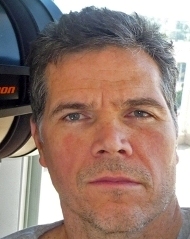For years I was an evangelical about InRoads Storm&Sanitary.
One barrier to acceptance was the drainage calcs. It took me six weeks in 1993 to confirm the math. It was my job specifically to Certify the software. Most hydraulic leads did not have the time and level of commitment to check all the numbers.
I saw Ray Oldham of Idaho DOT on a plane once. This the actual conversation:
"Hey, Ray! How are you?"
<pleasantries>
"Are you using Storm&Sanitary?"
"We have 20 copies sitting on a shelf, but no." [in those days, software copies came in big boxes].
"Why aren't you using it?"
"We're waiting for our Hydraulic Chief to die."
[I laugh hard.]
"No, seriously. He doesn't trust the numbers. So, as soon as he's gone we're going to move forward with it."
When I heard that OpenRoads was going to pretty much take the Hydraulic engine directly from Haestad - universally trusted - I thought "Well, that hurdle is gone."
The reality is that StormCAD - the most simple of the OpenFlows packages - is considerable more powerful - and complex - than most of what the Roadway Engineering groups have used in the past, including GEOPAK Drainage and InRoads Drainage.
It's less about trust of the software now than trust of the hydraulic expertise of the staff. There are Quality capabilities built into the software to significantly reduce the risk of error and to allow managers to review others' work, whether it be internal staff or outside submittals. As the risk is "custom", the mitigation customizations generally need to be defined and implemented internally. Defining, Implementing, and Verifying the Quality Assurance systems seems to be the implementation hold now.
Additionally, I thought that the OpenFlows/Haestad users would flock to the Immersive 3D OpenRoads environment. Not so much. I joke that those in the Haestad Cult "just prefer tabular input."
I used to joke with Kristen Dietrich that the old standalone and MicroStation products were "dead products". She pointed out that there was a strong ongoing user base happy with their software. Point taken, I then started referring to such versions as Reduced Integration Products. RIP. ![]()
Note: Part of the reason I wrote the OpenRoads Collaboration Core courses was to ease the onboarding of the RIP users to the OpenRoads environment.
To summarize barriers to adopting OpenRoads Drainage:
- StormCAD and CivilStorm is significantly more powerful than InRoads Drainage and GEOPAK Drainage. It is correspondingly more complex. There is a learning curve.
- The Haestad/OpenFlows user base is reluctant to move into the BIM- and Digital Twin-ready immersive 3D design environment of OpenRoads.
- Managerial review of the more complex hydraulic deliverable is more complex. While broad and automated QA/QC tools are available, there is a bit of a lift to implement them.
